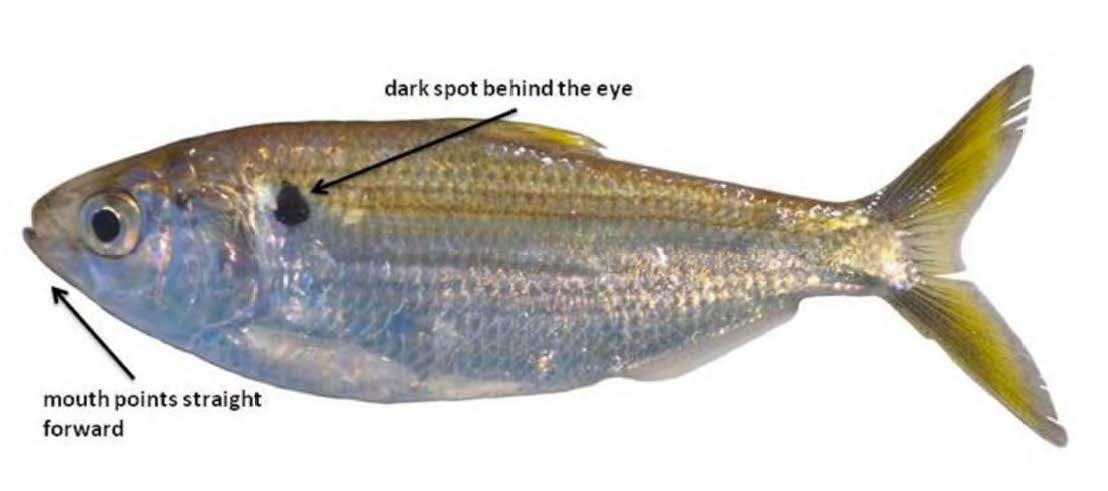Habits and Habitat
Threadfin shad are abundant in most of Mississippi’s rivers, streams, lakes, and reservoirs. They filter feed heavily on suitably sized plant and animal material with phytoplankton and algae making up most of the diet. Spawning begins in late spring when water temperatures reach approximately 70°F, and may continue into the summer. Spawning occurs from dawn to shortly after sunrise and the eggs are released near brush, vegetation or logs where they sink to the bottom and attach to plants and other objects. Natural hybrids with gizzard shad are not uncommon.

